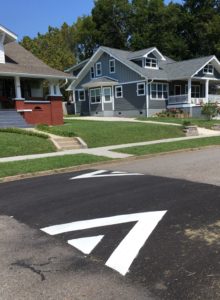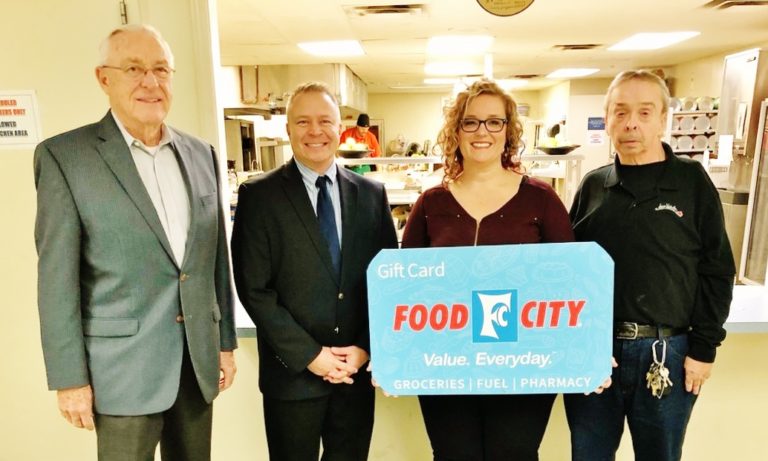Chilhowee Park Neighbors Praise Long Awaited Speed Humps
The City of Knoxville budget for 2020 allowed for 6 neighborhood traffic calming projects – with one in East Knoxville.
 Knoxville, TN (September 2020) – As recently as a few months ago, day and night, impatient (or thrill-seeking) motorists would speed at 60 mph along the straight-as-an-arrow Woodbine Avenue in East Knoxville.
Knoxville, TN (September 2020) – As recently as a few months ago, day and night, impatient (or thrill-seeking) motorists would speed at 60 mph along the straight-as-an-arrow Woodbine Avenue in East Knoxville.As part of the City’s Neighborhood Traffic Safety Program – visit www.knoxvilletn.gov/trafficsafety – more than a dozen speed humps were strategically constructed down Woodbine and East Fifth this summer.
The neighbors say they’ve noticed an immediate effect.
“We’ve wanted this for 20 years,” said Sherene Jacobs, president of the neighborhood association, who lives near Chilhowee Park and also owns Perk City coffeehouse on Magnolia Avenue, adjacent to the park. “Almost everybody is on the same page in wanting the speed bumps.
“We’re happy. It’s made a big difference. With the cars going 60 and 70 mph, we were afraid for children being out – that a car might come up on the sidewalk even. Now, you’ll see the kids playing outside. It’s much safer.”
Singer and WUOT Jazz Jam host Kelle Jolly, another resident who supported the traffic-calming devices being installed, agrees. “It’s definitely made a difference,” Jolly said. “Cars have slowed down. It feels safer to me. It’s easier to walk up and down the street, or to more safely ride a bike, or walk a dog.”
The $200,000 allocated for traffic calming has been tapped out for now, but funding for additional projects is anticipated in future years.
Eden Slater, the City’s Assistant Neighborhood Coordinator, encourages neighborhood residents to start the application process now because building consensus and the City developing a traffic solution takes several years. In fact, due to a large number of applications in process and limited funding, it typically takes three to five years for a traffic-calming project to move from concept to design to installation.
The lengthy process requires building support and signatures from your neighbors, submitting pages of paperwork to the city for evaluation, instituting a “Slow Down in K-Town” yard sign campaign. Then if approved, city engineers will be dispatched to validate the years-long problem in your neighborhood. Your request will then be added to a 3-5 year waiting list:
- First, residents meet and share information and preferences.
- Then collect petitions to gain support from their neighbors before
- Traffic engineers conduct speed studies and tailor a plan for devices, such as speed humps, that are specific to each community’s preferences, street design, traffic patterns, and topography.
Interested in starting the process in your neighborhood? For information on the Neighborhood Traffic Safety Program, or details about starting a Slow Down in K-Town anti-speeding education campaign in your neighborhood, click here: www.knoxvilletn.gov/trafficsafety
As one Chilhowee Park area resident put it, “The speed humps have changed the whole vibe of our neighborhood. I see people out walking and utilizing the streets again.”
Chilhowee Park Neighborhood Assoc: Fifth and Woodbine Avenues traffic calming projects completed on the limited funds for 2020 includes neighborhoods in North and West Knoxville:
- West Hills Community Association: Corteland Drive and Marlboro Road
- Fountaincrest Neighborhood Association: Hillcrest Drive
- Beverly Place residents: Beverly Place
- Westmoreland Hills Homeowners Association and Nubbin Ridge Road residents: Westmoreland Boulevard, Nubbin Ridge Road and Whitower Drive
- Wesley Neighbors Community Association: Wesley Road, Sheffield Drive, and Gainsborough Drive
Assistant Neighborhood Coordinator Eden Slater encourages neighborhood residents to start their application process early because building consensus and Engineering staff doing the technical work takes several years.
“Developing a neighborhood-specific traffic-calming plan is intricate and requires effort, dialogue, and collaboration,” Slater said. “People interested in the Neighborhood Traffic Safety Program should go online and familiarize themselves with what the process entails. Please contact the Office of Neighborhoods. We can help navigate through the process and share what’s worked well in other neighborhoods.”
With a large number of applications from neighborhoods, the new process and limited funding take three to five years for a traffic-calming project to move from an application to a concept, design, and installation.








